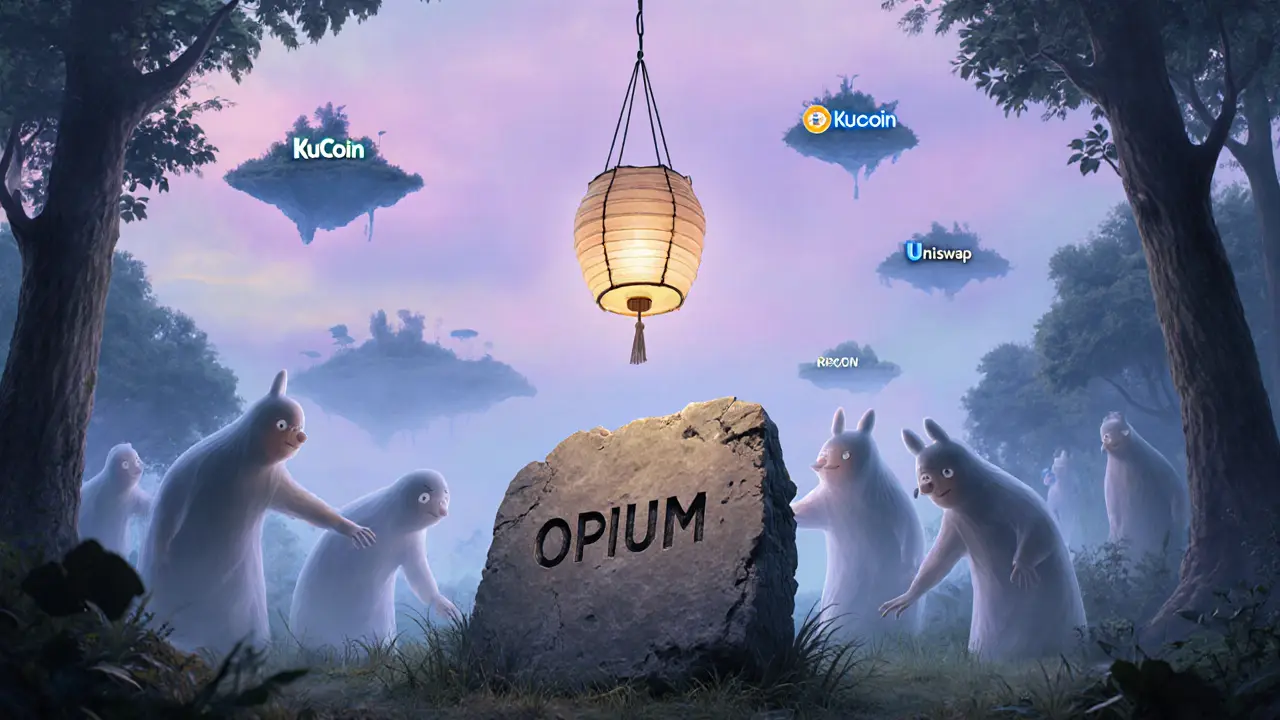Opium crypto: What it is, why it matters, and what you need to know
When you hear Opium crypto, a decentralized finance protocol built for trading crypto derivatives on-chain. Also known as Opium protocol, it lets users create and trade options, futures, and other derivative contracts without relying on traditional exchanges. Unlike most meme coins or speculative tokens, Opium crypto isn’t about hype—it’s about building real financial tools on Ethereum and other blockchains. It’s one of the few projects focused on making derivatives accessible to regular people, not just hedge funds.
Opium crypto works by letting users lock up assets like ETH or USDC and then create custom derivative contracts. Someone can bet on whether Bitcoin will hit $70K by next month, and another person can take the opposite side—all without a middleman. This is done through smart contracts that automatically settle payouts when conditions are met. It’s similar to betting on a sports game, but instead of a bookie, the code handles everything. That’s why Opium crypto is often grouped with other DeFi derivatives platforms like Synthetix or dYdX, though it’s more focused on user-generated contracts than standardized ones.
What makes Opium crypto stand out is how it handles risk. Most crypto derivatives platforms require you to put up huge collateral or face liquidation if prices move against you. Opium crypto’s design reduces that risk by allowing users to set their own terms: how much they’re willing to lose, when the contract expires, and who can join. It’s like building your own insurance policy for crypto prices. But here’s the catch: just because the system is decentralized doesn’t mean it’s safe. There are still scams pretending to be Opium, fake tokens, and phishing sites copying its interface. Always check the official contract address and never trust a link sent in a Discord DM.
Opium crypto doesn’t have a massive user base like Uniswap, but it’s been quietly used by traders who want control over their risk exposure. The Opium token (OPIUM) is used for governance—holders vote on upgrades, fee changes, and new features. It’s not a get-rich-quick coin. It’s a tool for people who understand how options work and want to use them on-chain. If you’ve ever wondered how to hedge your crypto holdings without using centralized exchanges like Binance or Coinbase, Opium crypto offers one of the few open, non-custodial ways to do it.
Behind Opium crypto are real technical challenges: liquidity gaps, gas fees on Ethereum, and the fact that most people still don’t understand how derivatives work. That’s why the community around it is small but sharp. The posts below dive into what’s actually happening with Opium crypto right now—whether the token is still active, how the protocol is evolving, and what traps to avoid if you’re thinking about using it. You’ll find guides on how to interact with the protocol safely, breakdowns of its tokenomics, and warnings about fake versions. No fluff. Just what you need to know before you touch it.
What is Opium (OPIUM) Crypto Coin? The Truth About This Obscure Token
Opium (OPIUM) is a micro-cap crypto token with no team, no whitepaper, and no utility. Trading at $0.03, it's confused with a separate NFT collection. Avoid it-there's no legitimate reason to invest.
